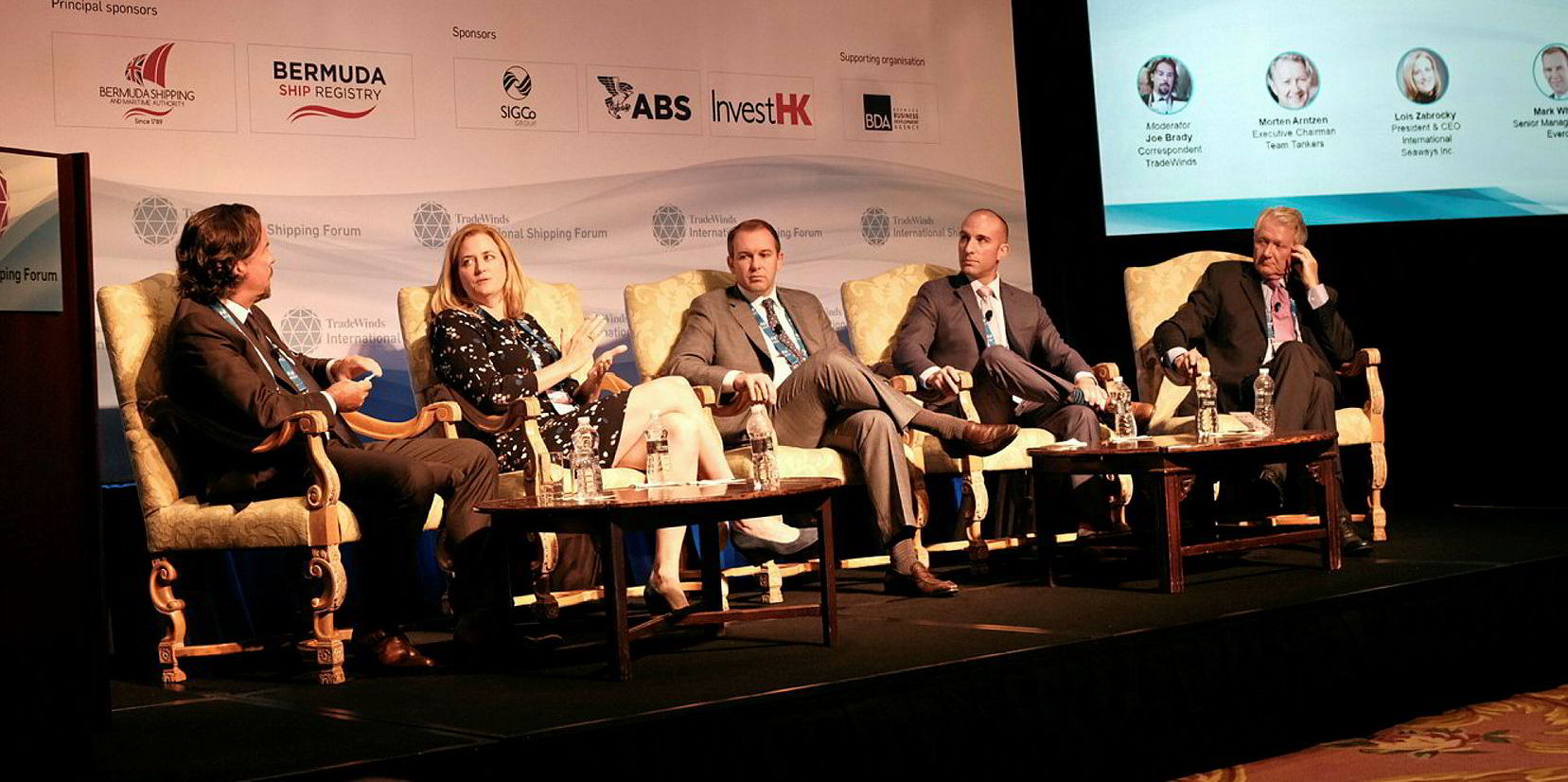A rising tide lifts all boats, as former US President John F Kennedy famously said. And strengthening freight markets in recent weeks and months are certainly a source of relief for many, having seen so many promised shipping market upturns fade and turn to dust over the past decade.
But the latest upturn may not lift all ships or treat all shipowners equally. While large industrial players will benefit from their scale, it is likely to cast an even harsher light on the many small listed companies that have struggled to generate consistent profits over the past few years.
Poor returns
Compounding poor returns, they have little share trading liquidity due to their small size, making them irrelevant to US institutional investors.
With little other support than the founding family shareholders and a few stock pickers, this may now prove to be a moment of truth for small-cap shipowners.
To the outsider, shipping markets today look rosier than they have in some time. Clarksons' earnings benchmark across all sectors — the ClarkSea — closed last week up 23% at $20,096, its highest level since 2010.
While the spike has been fuelled by the surge in crude tanker rates following the sanctions dislocation of China’s Cosco, it has been supported by stronger underlying dry cargo markets, despite a slide from peaks in the last month.
But today’s spike does nothing to change the track record of the past five years. As Team Tankers executive chairman Morten Arntzen points out, investors have every reason to be very wary of a market that has promised so much yet delivered so little.
Investors are expecting higher standards of corporate governance and full regulatory compliance, and we have not even touched the environmental and decarbonisation agenda yet
Shipping stocks
Speaking at the TradeWinds International Shipping Forum in Bermuda this week, Arntzen highlighted the disparity between the returns on the broad US equity market and five of the biggest shipping stocks.
Over the last five years, a $1,000 investment in an S&P index fund would have generated a 55% return. The same investment spread equally between Euronav, Frontline, Star Bulk Carriers, Scorpio Tankers and Scorpio Bulkers would have lost you money.
By contrast, Euronav is down 8%, Scorpio Tankers 61%, Star Bulk 71% and Scorpio Bulkers 89%, Arntzen says.
It is a period that Evercore senior managing director Mark Whatley told the forum was “a five-year walk in the desert”. And while investor sentiment is building again, it is a slow process.
It goes a long way to explain why it is now four years since the last shipping initial public offering on Wall Street.
For "micro-cap" stocks — those in the $50m to $300m value range — the situation is even tougher than for the big guns. And for the "nano-cap" stocks valued at less than $50m, the situation is dire.
Mounting pressure
Despite rising freight markets offering some breathing space, it is the pressure for other aspects of business that is mounting. Investors are expecting higher standards of corporate governance and full regulatory compliance, and we have not even touched the environmental and decarbonisation agenda yet.
To be credible in the eyes of institutional investors today, listed shipping companies need to demonstrate six key attributes, argues Arntzen.
- Management needs to be believable, set credible returns objectives that are communicated to shareholders in transparent fashion. They need to be honest and set high single-digit returns that can be managed through the cycles.
- Management, the board and shareholders need to be aligned.
- Corporate governance standards should put you in the top quartile of analyst Michael Webber’s influential scorecard.
- You must get closer to clients to win long-term charters and cargo contracts.
- In-house technical management is vital, to operate ships at competitive cost and accident free.
- No more than 50% leverage if in the spot market, slightly higher with a more mixed model.
With those issues covered, investors will have faith. But for those lacking in such key attributes, remaining public will only get tougher and more expensive.
Compliance costs
Compliance costs are proportionally higher for small companies, already suffering valuations that are up to 40% discounts to the net asset value of their ships.
One obvious route out is to sell up, take the cash from larger companies, help consolidate the market, and move on.
There are plenty of well-run private and profitable shipowners in Greece, Norway and Hong Kong that would make willing buyers of the ships small-cap companies currently control, Arntzen believes.
Never one to pull his punches, Arntzen has a simple though brutal appraisal of the outlook for small-cap shipping stocks.
“In public markets, the game’s over,” he said.






